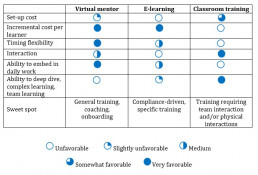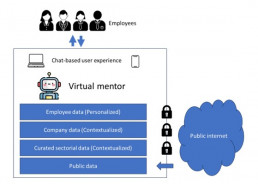Energy Efficiency: Why It Matters for European Suppliers, Consumers and the Technology Ecosystems Across Industries
Europe is gradually recovering from the worst energy crisis in a generation, which started as a tight supply market in 2021 and quickly escalated into a full-blown global supply shock, with energy prices peaking in Q3 2022 at levels unseen in decades. This year, as prices and supply readjust to profoundly changed market fundamentals, Europeans are weighing the long-term consequences of this crisis on their consumption behavior, the cost of doing business and broader decarbonization strategy.
In this context, energy efficiency has quickly risen to the top of the business and policy discourse, not only as a tactical tool to tackle higher energy prices today, but also as a key foundation of the EU’s climate transition under the ‘Fit for 55’ strategy.
In the near term, energy efficiency can improve consumer resilience, helping them cope with a higher cost environment. In the medium term, it should make it relatively less painful for Europe to regain its lost energy security, helping reduce energy dependency and diversify supplier risk.
Longer-term, it has the potential for lowering the cost of the energy transition by reducing the investment needed to decarbonize power production and electrify energy use.
Converging Towards Energy Efficiency: Policies, Prices and Demand Across Sectors
From a market standpoint, the time is ripe for Europe to raise its energy efficiency game as it now sits at the convergence of three critical enablers of a functioning energy services market.
- Policies and subsidies. Several pieces of legislation are being (or have recently been) rolled out that will accelerate changes in the way energy is used and produced in the EU. The most critical one on the use side of the balance is the ongoing revision of the Energy Efficiency Directive (EED), others include revisions of Directives covering the Energy Performance of Buildings, Renewable Energy and Energy Taxation.
- Energy prices. In June 2023, EU wholesale electricity and gas prices were still more than 70% and 2.7 times higher than in June 2019, respectively. Pivoting away from cheap and abundant piped Russian gas to new supplies (including via LNG, with all the related infrastructure and transport complexities) means the market may remain tight, resulting in higher prices than pre-2021 levels in the medium term.
- Market demand. In just one year, the energy crisis has done more to fuel the European consumer’s demand for energy efficiency than decades of direct incentives and tax credits. Especially for commercial and industrial energy consumers, from process manufacturers to food retailers and hospitals, the tactical need to react to higher energy cost is triggering investments that can serve these businesses well in their longer-term decarbonization plans. In the immediate aftermath of the energy crisis – IDC data shows – almost half of European businesses were planning to improve the efficiency of their energy use to limit the impact of higher energy prices on the cost of doing business. At the same time, between 50% and 60% were planning to invest in energy efficiency (both data- and capital investment-driven) as part of their broader decarbonization strategies.
This renewed focus has profound implications not only for energy suppliers and service providers but also for large and small energy consumers across European industries and their technical ecosystems.
European manufacturers and retailers, for example, have long been working on their energy mix and consumption to generate cost efficiencies, meet growing customer expectations and target ambitious long-term sustainability goals. In today’s energy price environment, however, energy efficiency has become critical to sustain profitability and competitiveness. This is particularly the case for organizations competing with non-European producers that have access to cheaper energy supplies.
Manufacturing
While energy efficiency has always been a consideration for manufacturing organizations, access to relatively cheap energy, loose regulatory requirements and the lack of effective digital technology led to some complacency in the past. Nowadays, manufacturers have the ability to contextualize and analyze real-time data by breaking down data silos across their IT and OT estate. With access to data, technology owners on the shop floor can adjust production plans and material routes accordingly.
Additionally, energy efficiency initiatives have the long-term potential to help manufacturers jump-start broader data-driven process improvement strategies. For example, a prominent Tier 1 global automotive supplier successfully connected over 250 energy-related data points. The energy management system allowed the company to analyze the energy consumption of injection molding machines for each produced part. With this data, not only could the company adjust production equipment and determine the most efficient injection molding machine based on the parts being produced but also detect and alert supervisors of equipment anomalies.
Retail
Retailers too are prioritizing the implementation of energy management systems in their retail operations, along with a growing focus on supply chain and logistics efficiency, to minimize overall energy consumption.
For retailers in particular, implementing energy-efficient technologies and practices goes well beyond sustaining profitability and competitiveness. As consumers become increasingly conscious of the environmental impact of their purchases, energy efficiency becomes a clear first step towards achieving sustainability goals that align with such changing preferences.
This should not be viewed (only) as a way to enhance brand reputation and attract environmentally conscious consumers, but rather materially help them improve their environmental footprint. For example, at the beginning of the energy crisis, one of the UK’s leading food and grocery retailers strengthened its commitment to tackling the climate crisis. This meant cutting as many as five years from its target to become carbon neutral in its business and operations (Scope 1 and 2), by 2035. To do so, the grocer is focusing on maximizing the energy efficiency of its operations, reducing carbon emissions, food waste, plastic packaging, water usage, and increasing recycling.
Healthcare
For European healthcare organizations, higher energy prices are rubbing salt in the wound of the enormous resource strain caused by two years of pandemic.
The sector is one of the largest and most sophisticated energy consumers and hospitals are typically among a territory’s most energy-intensive buildings. Not only medical equipment and healthcare facilities, on which patients’ lives depend, necessitate 24/7 power supply. But within the same hospital, each of those facilities and departments have their own requirements in terms of access, lighting, temperature and humidity, cleanliness and air filtration, availability of water, power, medical gases and communications.
With healthcare fees typically lagging inflation, often by several years, and with energy bills up by as much as 100% or more since 2021, energy prices are not only hurting hospitals’ bottom lines but diverting crucial resources from patient care. This adds to inflation increasing the cost of medical equipment, pharmaceuticals, medical logistics and other expenses outside core operations.
In this context, European hospitals are prioritizing efforts to reduce energy consumption (and limit their carbon emissions in the process) without impacting the quality and safety of day-to-day care.
Two investment areas are worth calling out. Adopting sustainable design principles for new builds using, for example, parametric modelling to track the rise and fall of the sun in different seasons, allowing to make the most of natural light and solar radiation. Plans for rooftop solar are also increasing, enabling hospitals to self-generate and decarbonize part of their energy needs. Deploying smart assets and measurement systems is also on the rise, to monitor temperatures, air quality, occupancy and overall humidity and optimize operations.
Public Sector
European Governments and public administrations, for their part, will have an increasingly relevant role to play going forward. They are expected to not only regulate and orchestrate but actually lead the energy transition, demonstrating best practices and setting a benchmark against which other organizations can measure themselves.
The proposed revision of the EU EED is a case in point. It firmly establishes that the public sector should have an “exemplary role” underscored by specific, more aggressive energy efficiency goals than the rest of the economy. Similarly, the UK Government’s Net Zero Strategy states that “the wider public sector will lead by example during the transition to net zero.”
This is critical because governments are among the largest contributors to European economies. They have their own significant direct environmental footprint and therefore have a critical influence on the journey to net zero. For example, in the UK, the Government estimates that emissions from public buildings account for approximately 2% of total UK emissions. And this only includes estimates of fuel burnt not wider scope 1, 2 and 3 emissions.
Driven by regulation, higher energy prices, NextGeneration EU funding, and public expectations, local, regional and national governments are putting in place measures to improve the efficiency of their biggest emitters – transport fleets and public buildings and assets.
IDC research highlights that, across Europe, 37% of governments are investing in building energy management systems and nearly 60% are investing in workplace management systems to optimize space utilization and occupancy. It must be noted that a selection of government departments, due to their size and function generate the bulk of public sector emissions.
For instance, the Ministry of Defence is estimated to account for 50% of the UK central government emissions; therefore, accelerating energy efficiency measures in those departments is essential.
Financial Services
As a relatively less energy-intensive sector, the direct effects of higher energy costs on the financial services industry were less critical than for others. The major energy consumers in financial services are data centers and, to a lesser degree, office buildings, and even for these the increase in cost remained manageable.
Financial services, however, play a critical role in enabling the energy transition of their corporate and consumer customers through the issuance of green and social bonds, credit and other financing options. The surge in energy prices, however, will likely have delayed the net-zero targets of banks’ lending portfolios, as customers have been forced to use working capital to pay their energy bills.
The bigger dilemma however is that, in addition to renewables, diversification from Russian gas will require major investments in oil and gas exploration and import infrastructures, which is fundamentally countering Europe’s green deal policies.
In autumn 2022 there were also concerns that energy suppliers and the energy-intensive industries may bend under the crisis, which increased the pressure on banks to prepare for loan defaults. Thanks largely to the estimated €758 billion (Source: Bruegel) in fiscal policy measures allocated by European government to protecting consumers from rising energy costs (including nationalization of energy utility giants Uniper and EDF), European banks only saw a marginal increase in loan defaults.
Overall, the energy crisis may have slowed down the green transformation of the financial services industry asset base, but the long-term opportunities of going net-zero remain sound.
Utilities
Finally, turning to the supply side of the energy balance, energy and utility companies represent the business and infrastructure backbone of the energy transition.
Over the past five to 10 years there has a been a substantial uptick in investment by European utilities and energy suppliers in the energy services (ESCo) space. From diversified energy companies to international electric utilities, energy infrastructure operators and municipal multi-utilities, many traditional players have added energy management technology and efficiency capabilities to their portfolios.
For example, between 2015 and 2019, a major European power utility acquired companies covering the full stack of B2B energy technology and services. The resulting ESCo offers energy analytics and energy management technology, financing and operations of solar, storage and co-generation plants, energy audit services and performance contracting, as well as demand side response solutions.
The strategic intent is clearly to integrate horizontally by adding to the existing commodity business a set of solutions that enable customers to consume more sustainably and cost-effectively, in an effort to meet the growing demand for efficiency. The energy crisis has obviously provided fresh impetus to this type of strategies. To reflect this acceleration, at the end of last year, IDC predicted that by 2025, a third of competitive gentailers would set up integrated supply, efficiency, decarbonization, and electrification service portfolios, growing average profit per customer by more than 20%.
Contributing analysts: Jan Burian, Adriana Allocato, Massimiliano Claps, Louisa Barker, Tom Zink and Filippo Battaini
For more in-depth insights into industry coverage, visit our website.
How AI-Powered Virtual Mentors Will Revolutionize Learning and Onboarding
Generative AI has wowed consumers and individuals across the globe with its ability to find information and author high-quality content. For enterprises, the use cases are still being explored and defined. In this blog, we will explore a potential ‘killer app’ for generative AI: The Virtual Mentor as a new way to do learning and onboarding.
In today’s organizations, the vast majority of mentoring is done by speaking to experienced colleagues, looking for answers in the public internet or in company-specific intranets, trawling through various PDF guides and presentations or maybe e-learning courses or classroom sessions. The problem is that there is no easy way of finding the information employees need using existing technologies and approaches.
Current e-learning and onboarding solutions struggle with multiple challenges. Firstly, the content is costly and time-consuming to produce. Secondly, it quickly becomes outdated and is generally static, once produced. Thirdly, the one-size-fits-all standard approach to learning and onboarding doesn’t quite meet the needs of the individual, who already knows all about A but would like to deep-dive into B.
We believe that generative AI will be a game changer in solving these problems, because the system themselves – for the first time in world history – can generate the needed learning content. Future virtual mentors will meet many of today’s unserved learning and onboarding needs and employee would be able to interact digitally, remotely or in the office, intensively or in drip-feed style, and the learning content would be created on the fly determined largely by the nature of the interaction and the learner queries.
AI-Powered Virtual Mentor vs. Previous Learning Approaches
First of all, let’s define generative AI. We define generative AI as a branch of computer science that involves unsupervised and semi-supervised algorithms that enable computers to create new content using previously created content, such as text, audio, video, images and code.
Secondly, let’s define what an AI-powered virtual mentor is. We envision the AI-powered mentor is have the following characteristics:
- Always available. Like Microsoft’s failed personal digital assistant Clippy (remember the animated talking paperclip?), a virtual mentor will be an omni-available resource to the learner.
- Creates content itself. If fed enough material, a generative AI-powered virtual mentor will be able to create the relevant teaching material itself by synthesizing existing content.
- Conversational. Just like a real-life, human mentor, the AI-powered virtual mentor interacts via conversation. The human mentor converses verbally, while the virtual mentor works best via written conversation (although verbal user experience is on its way, as well).
- Adaptive. A virtual mentor goes far beyond what is known today as ‘adaptive learning’, I.e., an e-learning experience with some variation in the course depending on the individual learner. A virtual mentor can freestyle and go where the learner would like to go within a general topic area.
An employee would be able to ask a wide variety of general questions to the virtual mentor, such as:
- What is the pricing structure for product X?
- Do we have representation in Peru?
- What are the key new features in the version YY.YYY of product Z?
- What is the expense management policy for a client meeting?
- Who in my company works with [expertise area]?
Let’s compare what it is like to work with a generative AI-powered virtual mentor compared to traditional e-learning as well as classroom training:
Why Do We Need Virtual Mentors When We Already Have ChatGPT and Similar Generative AI Platforms?
ChatGPT is of limited use in an enterprise context for one simple reason: Employees using the platform are likely to reveal sensitive company information. This is why most organizations have banned the use of ChatGPT among employees.
Just imagine an employee at a healthcare provider uploaded the raw transcript of an internal meeting regarding the cancer treatment of patient XX and asking for an abbreviated minute of meeting. Such an upload to a public internet system would constitute a major violation of the privacy of patient XX.
Virtual mentors, on the other hand, would leverage the public internet-based Large Learning Models but would not feed any inquiries from employees back to the public internet. Such ChatGPT replicas in confined corporate setting will be the first wave of generative AI virtual mentors that we are going to see on the market.
This will, in other words, be general purpose virtual mentors based upon public internet information. These can be adopted by organizations of any size and are ready to use immediately.
A subsequent wave of virtual mentors will be based on curated content specific to a functional area or an industry or similar. Such specialized content virtual mentors will be sold by vendors that are in charge of curating content and maintaining the AI solution.
A virtual mentor in the area of accounting could be offered by learning content provider or alternatively to an accounting solution provider. Some specialized virtual mentors could be provided as free add-ons to commercial software subscriptions.
Finally, we will see a wave of organization-specific virtual mentors that will act as experts in one organization. In this case, the organization itself would be in charge – possibly aided by a services provider – of feeding the system with learning material.
A product manufacturer would input all manuals, product FAQs, marketing material, customer service interactions, HR policies, internal communication, public pricing information, everything on the intranet and company internet sites, training materials, etc. That solution could be very helpful in onboarding new employees and help answering inquiries for existing employees. However, it would take time and resources to implement and require a certain company size in order to benefit.
The figure below shows the different levels of data feeding into a virtual mentor. The interaction between the virtual mentor and the employee will be chat-based to begin with. However, in the medium term, interaction could also be done through verbal communication, games, metaverses, augmented reality, etc.
Evidence of Generative AI Replacing Existing Digital Learning and Coaching Solutions
Chegg, an established American education technology (EdTech) company known for textbook rentals, online tutoring, and a variety of student services, was among the entities to feel the competition from generative AI. Their initial projection regarding generative AI tools, such as ChatGPT, was that these technologies would take a longer period to truly influence the market.
However, the release and subsequent popularity of GPT-4 among students, credited to its swift response time, efficiency, and affordability, led to a sales slowdown and a dramatic Chegg stock price decline of 48% in early May 2023.
As response to these trends, Chegg entered into a partnership with OpenAI in April 2023, leading to the development of CheggMate. This tool, which is still in its development phase, intends to amalgamate GPT-4’s generative AI capabilities with Chegg’s existing question database.
The goal for CheggMate is to enhance user experience by better aligning user queries with the most suitable resources.
Other EdTech vendors, including Duolingo, have unveiled new AI-driven features. Specifically, Duolingo introduced a role-play chat where users can learn a language by conversing with an AI. After these interactions, they receive feedback and suggestions to enhance their language-learning journey.
We have also witnessed the first examples of generative AI approaches in mentoring. CoachHub is a leading vendor of digital coaching solutions recently unveiled AIMY, a virtual AI-powered career coach rooted in OpenAI’s ChatGPT. AIMY is designed to let users try personalized coaching sessions without any human interactions and without the costs associated with traditional coaching. It emulates human to human coaching, is still in beta phase, and not yet able to manage too complex discussions.
Challenges to Overcome for Virtual Mentor Solutions
Adopting virtual mentor solutions for learning, onboarding, and coaching purposes is not without challenges. Here are a few key obstacles that organizations might encounter when introducing these new AI-driven solutions:
- Data privacy and security concerns. The first cases of data breaches related to the use of generative AI solutions by employees have already emerged, such as Samsung’s discovery of staff uploading a variety of sensitive information to ChatGPT. Future virtual mentor solutions will not feedback data to public generative AI systems, such as ChatGPT.
As shown in the figure above, virtual mentors will use a combination of user data, curated company data, curated industry or functionally specific data as well as publicly available data as training material. Such approaches will limit the risk of data breaches significantly.
However, adoption will require significant attention to security-related aspects, such as ensuring robust encryption, compliance with data protection regulations, etc.
- Implementation complexity and skills gap. Introducing virtual mentor solutions on top of existing data is likely to require specialist AI training skills, which might not be in possession of many organizations. In terms of the overview figure above, the company-specific layer presents the biggest challenges. This is because training material is limited (compared to the vast number of resources available on the public internet) and because training material must be curated, updated, deleted (in case of obsolete material), etc.
- Risk of hallucinations. AI-driven virtual mentors can produce “hallucinations” or inaccurate answers. In a mentoring context, this can lead to confusion or misguidance and ultimately a rejection of the mentor system as unreliable by the employees. The risk of hallucinations by the virtual mentor means that organizations will have to dedicate resources to quality assurance, ticketing system for incorrect or inappropriate answers, etc.
Implications for HCM and Payroll Vendors
Generative AI will have a major impact on the field of Human Capital Management solutions. There has been a significant initial focus on the impact of generative AI on recruiting, candidate marketing, and employee performance.
However, learning and onboarding will also see massive change as a result of generative AI.
A market for curation of Large Learning Models for various industries and functional areas will appear. This could open new revenue streams for the providers with strong existing domain knowledge.
As displayed on the table above, different learning delivery methods will have different sweet spots. Classroom-based learning and traditional e-learning formats will not disappear.
What will happen, however, is that a lot of the more general learning and onboarding tasks will transition to generative AI-based learning formats. Initially, the formats will evolve around chat-based interfaces, but over time other user experiences and communication formats will emerge.
Generative AI is an opportunity for vendors of learning and onboarding solutions. However, they will need to react fast in terms of evolving existing solutions and building in generative AI features and aspects.
Existing learning and onboarding vendors will come under pressure from new providers of virtual mentors and other related generative AI-based solutions. Generative AI is a twin edged sword for HCM vendors, a blessing for those who are willing revisit their existing offerings, but a curse for those that fail to respond.
AI – Are You Ready to Get Involved or Will Your Efforts Be Wasted?
In a world inundated with AI buzz, are you feeling overwhelmed by the incessant chatter around artificial intelligence? As the AI frenzy reaches its zenith, it’s imperative that we take a collective breath and evaluate how to get to a positive impact for our organization. Let’s pause and reevaluate the landscape.
Neil Ward-Dutton, one of our distinguished IDC analysts, once aptly noted that AI appears as an enchanting spell until we unravel its inherent limitations and complications. And limitations, there are many, regardless of how you approach the matter. A considerable portion of these limitations stem from the data that fuels AI’s algorithms: for AI systems developed internally, the scarcity of high-quality data in most organizations data often proves to be a stumbling block; and for generative AI systems that leverage pre-built “foundation models” already trained on external data sources, lack of transparency about the provenance and quality of those data sources creates a number of risks.
While generating training data is an option, recent observations indicate that excessive training can actually yield adverse outcomes. And that’s just the tip of the iceberg; the complications extend into the realms of bias and ethical quandaries.
Dispelling any illusions, let’s be clear – acquiring a software package won’t instantaneously immerse your organization into the realm of AI excellence. Remember the CIO who, a few years back, joyfully declared hiring two data scientists as the path to “getting AI”? Upon inquiry about their role and the benefits they’d bring, he confessed, “I’m not a data scientist; I don’t know.” Such anecdotes underscore the essence of the issue.
Presently, history seems to be repeating itself. When inquired about AI’s potential, responses often resemble, “I don’t know; I’ll ask the AI.” This reveals a common theme – many are intrigued by AI-enabled possibilities, but grappling with its tangible advantages remains a challenge. As the chasm between curiosity and efficacy widens, it begs the question: Is the investment in perfecting AI worth the monumental effort?
We have been defining what is needed to be successful with AI and the steps needed to make it work. We invite you to come and discuss with your peers what steps make sense and where to hold back inverstment. By the end of the session you should have insight into the value you can realisticly derive from AI over the next three horizons and what the pitfalls may be.
Why Generative AI and Cloud Platforms Are a Perfect Match
Is Generative AI possible without the cloud? This question lingers as we delve into the world of AI innovation and explore the potential of generative AI models.
Let’s try to agree on the pivotal role that cloud platforms play in unleashing the power of generative AI as they provide a pathway to rapid development, scalability, and help to unlock the full potential of what some call a groundbreaking technology.
So, do we think generative AI truly flourishes without the aid of cloud platforms? Are they really a match made in technological heaven?
The cloud serves as a catalyst for rapid development and scalability in the realm of generative AI. Imagine the obstacles faced by both startups and established vendors burdened with the need for costly infrastructure investments.
High-performance computing resources such as GPUs and TPUs become accessible without substantial upfront investments. This liberates organizations to focus on what truly matters: developing innovative generative AI solutions, free from almost any infrastructure concerns.
Download eBook: Generative AI in EMEA: Opportunities, Risks, and Futures
Beyond this, though, one of the most important benefits of cloud platforms for generative AI is the way they provide managed access to pre-trained foundation models and APIs. These resources act as a springboard, propelling developers forward without the need to start from scratch.
Pre-trained models capture the knowledge and expertise of generative AI experts, saving significant time and computational resources. By leveraging these models, developers can advance their projects, focusing on fine-tuning and customization rather than spending countless hours on training models.
Of course, enterprises can build and host their own foundational models themselves if they so wish, but this is a very expensive, complicated and time-consuming process that requires large teams of rare specialist talent. Cloud providers offer APIs that abstract the complexities of generative model architectures, thus simplifying the integration of generative AI capabilities into already existing and newly built applications. This democratizes access to generative AI, allowing developers to use its power without too deep expertise in model development.
Building generative AI models usually requires comprehensive and efficient development environments. Cloud providers offer a wide range of frameworks, development libraries, and collaboration tools tailored specifically to generative AI. These tools simplify the development, training, and evaluation of generative models, supporting developers and data scientists in bringing their ideas to life. By partnering with cloud providers, companies building developer tools and platforms ensure seamless integration with cloud-based infrastructure and services.
Yet, as much as we want to believe this is a romantic relationship, this is in fact a marriage of convenience aka business, so both sides need to think how this partnership will work for them.
Watch the Webcast: Generative AI in EMEA: Opportunities, Risks, and Futures
What AI-Model Providers Should Do
Prioritize Knowledge Transfer
To fully utilize generative AI, it is crucial to invest in knowledge transfer and training programs. Collaborate with cloud providers to develop training materials, workshops, and resources that enhance the understanding and skills of employees. Empowering individuals within organizations to leverage generative AI technologies effectively will maximize the potential of this field.
Foster Continuous Learning and Research
Leverage the support provided by cloud providers for research and development. Engage in research collaborations, attend conferences, and utilize cloud resources for experimentation and innovation. Staying up to date with the latest advancements in generative AI is vital for building new solutions.
Plan for Strong Data Management
Strong data governance practices in place are a must to ensure compliance, data privacy, and responsible use of data. While it makes a lot of sense to leverage cloud platforms’ data management and governance tools to maintain data quality, data lineage, and appropriate access controls throughout the generative AI lifecycle, AI providers must never assume that cloud providers’ tools are enough.
What Cloud Providers Should Do
Invest in Hardware/Chips R&D
Enhance hardware and chip capabilities specifically tailored for generative AI tasks. Explore specialized hardware accelerators, optimize GPU and TPU architectures, or even develop new chips designed to accelerate generative AI computations. By staying at the forefront of hardware advancements, cloud providers can offer superior performance and cost-efficiency.
Develop Industry-Specific or Use-Case Specific AI Frameworks
Differentiate by developing industry-specific or use-case specific AI frameworks that cater to the unique needs of various domains. Offer pre-trained models, domain-specific data management tools, and integration with industry-specific applications. By providing specialized AI frameworks, cloud providers can enable businesses to leverage generative AI effectively and drive sector-specific innovation.
Support Model Deployment and Lifecycle Management
Cloud platform providers must develop comprehensive tools for model deployment, monitoring, and lifecycle management in support of generative AI governance. This includes intuitive interfaces for deploying models, robust monitoring for issue resolution, and higher-level tools for responsible AI delivery. Simplifying processes enhances user experience for developers and data scientists.
Together, both sides should absolutely focus on building ecosystems and on fostering collaboration models that encourage the participation of various stakeholders in the generative AI space. Cloud providers need to create open platforms and APIs, allowing seamless integration with innovative tools, services, and solutions to provide customers with a broader range of generative AI capabilities. AI creators can leverage open platforms and APIs to integrate tools and services developed by complementary companies in the generative AI space, fostering a thriving marketplace of offerings.
And please, remember, a marriage of convenience can only work in situations where both partners enter the marriage with clear expectations and mutually beneficial goals. This can be too much for real family life but should be exactly what’s needed for commercial success.












